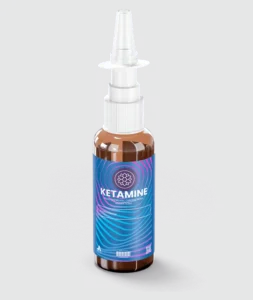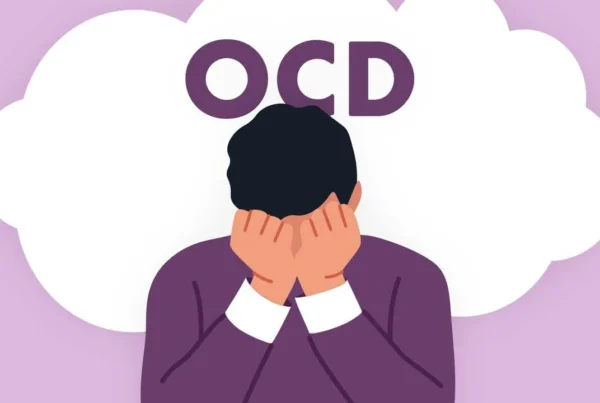Introduction: Ketamine Assisted Psychotherapy (KAP): Patient Demographics, Clinical Data and Outcomes in Three Large Practices Administering Ketamine with Psychotherapy
The search for innovative and effective treatments for mental health disorders continues to evolve, with ketamine emerging as a promising therapeutic agent. Ketamine Assisted Psychotherapy (KAP), which integrates the pharmacological effects of ketamine with structured psychotherapy, has shown significant promise in private clinical settings. One notable study by Dore et al. (2019) provides a comprehensive look into the real-world application of KAP, offering insights into patient demographics, clinical outcomes, and therapeutic implications. This article delves into the study’s findings and explores the broader context and potential of KAP.
Understanding KAP: What Sets It Apart
 Unlike traditional ketamine treatments, which often rely on intravenous (IV) administration in sterile clinical environments, KAP embraces the psychedelic properties of ketamine. It involves administering the drug in a supportive, often non-hospital setting, and pairing it with psychotherapy. This approach recognizes that the altered state induced by ketamine can serve as a catalyst for emotional breakthroughs and psychological healing.
Unlike traditional ketamine treatments, which often rely on intravenous (IV) administration in sterile clinical environments, KAP embraces the psychedelic properties of ketamine. It involves administering the drug in a supportive, often non-hospital setting, and pairing it with psychotherapy. This approach recognizes that the altered state induced by ketamine can serve as a catalyst for emotional breakthroughs and psychological healing.
Importantly, Dore et al. highlight that the psychedelic effects, often seen as undesirable in other medical contexts, are in fact a key feature in KAP. The treatment does not require IV access, which makes it more accessible and flexible, especially for supervised at-home use. The longstanding safety profile of ketamine supports this broader application.
Study Overview and Patient Population
The study analyzed data from 235 patients treated between 2013 and 2018 across three psychiatric practices: two in Northern California and one in Austin, Texas. The conditions treated included:
- Major depressive disorder (MDD)
- Attention deficit hyperactivity disorder (ADHD)
- Post-traumatic stress disorder (PTSD)
- Generalized anxiety disorder (GAD)
These patients were not participating in a clinical trial but were receiving care in real-world private practice settings, enhancing the ecological validity of the findings.
Key Outcomes and Measures of Success
The primary outcomes evaluated were changes in depression and anxiety levels, as measured by:
- Beck Depression Inventory (BDI)
- Hamilton Anxiety Rating Scale (HAM-A)
Findings indicated significant improvements in both depression and anxiety scores post-treatment. Patients self-reported their progress, and these scores were corroborated by clinician assessments, indicating strong consistency across data sources. All statistical correlations achieved high significance (p < 0.0001).
Who Benefits Most from KAP?
 The study conducted a subset analysis to determine which populations experienced the most benefit from KAP. Notable findings included:
The study conducted a subset analysis to determine which populations experienced the most benefit from KAP. Notable findings included:
- Patients with developmental trauma or complex PTSD (cPTSD) experienced the most significant reductions in both depression and anxiety scores.
- Older patients generally showed greater improvements in depression scores.
- Those with a severe symptom burden—including suicidality at intake, history of psychiatric hospitalization, and high Adverse Childhood Experiences (ACE) scores—demonstrated the largest gains in overall well-being.
This suggests that KAP may be particularly effective for individuals who have not responded well to traditional treatments and who carry complex psychological histories.
Mechanism of Action: Leveraging the Psychedelic State
One of the most intriguing elements of KAP is its use of ketamine’s psychedelic state. The study underscores that this altered state, often perceived as a side effect, is actually an integral component of the therapeutic process. This state appears to:
- Enable deeper introspection
- Lower psychological defenses
- Enhance the therapeutic alliance
By creating a state of heightened emotional receptivity, KAP may facilitate rapid and lasting therapeutic insights that are difficult to achieve through talk therapy alone.
Clinical Implications and Safety Profile
KAP appears to be not only effective but also well-tolerated. The study notes that there were no significant adverse effects that led to treatment discontinuation. Given its non-invasive nature (no IV required) and proven safety over decades of medical use, ketamine is well-suited for both clinical and supervised home environments.
Conclusion: A Promising Avenue for Mental Health Treatment
Dore et al.’s study provides compelling evidence that Ketamine Assisted Psychotherapy is a viable and effective treatment for a wide range of mental health challenges. With its capacity to significantly reduce symptoms of depression, anxiety, and PTSD—particularly in individuals with severe symptomatology or developmental trauma—KAP represents a paradigm shift in psychiatric care.
The integration of psychedelic experiences as therapeutic tools, rather than side effects, marks a significant advancement in mental health treatment. As more practitioners adopt this approach and further research emerges, KAP may well become a cornerstone in the treatment of complex psychological conditions.
Reference
Dore J, Turnipseed B, Dwyer S, Turnipseed A, Andries J, Ascani G, Monnette C, Huidekoper A, Strauss N, Wolfson P. Ketamine Assisted Psychotherapy (KAP): Patient Demographics, Clinical Data and Outcomes in Three Large Practices Administering Ketamine with Psychotherapy. J Psychoactive Drugs. 2019 Apr-Jun;51(2):189-198. doi: 10.1080/02791072.2019.1587556. PMID: 30917760.




